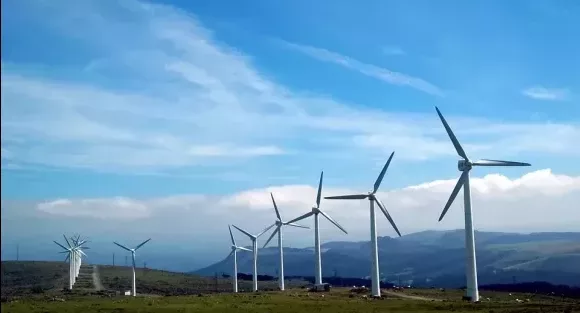Winds of Change: Why Papua New Guinea is Perfectly Positioned for a Wind Energy Revolution

Papua New Guinea is sitting on a world-class wind resource that could enable it to export electricity to the region in a relatively short period of time. Speaking at the Business Advantage PNG investment conference, Sean Whittaker, Senior Renewable Energy Specialist at the International Finance Corporation, said PNG would be well placed to start the renewable energy journey.
Windmills at Cape Orteal in Galicia. Credit: Makunin / Pixabay
“You have a world class resource,” said Whittaker. “We recently did an exercise in which we mapped offshore wind resources for countries around the world and PNG is doing very well.”
To qualify as world class, you need a wind speed of between 1 and 10 meters per second, according to the Global Wind Atlas – and PNG has areas above that wind speed.
“PNG’s offshore wind resource is an incredible attribute,” says Whittaker. “You have a lot of places with wind speeds over 10 meters per second, and the best offshore wind farms in Europe right now are in those 10 meters per second winds, so you have a huge resource there. -low.”
“Onshore wind is one of the cheapest forms of new generation of electricity. Period. We see onshore wind projects funded with an electricity cost of between three and six cents per kilowatt hour and that’s often the cheapest next-gen form you can get. ‘
He described other key factors that make PNG a good candidate for wind power, including:
- have a strong resource close to demand
- the fact that wind power can be built in two years so that you have a quick response to the increasing demand for energy
- it is a cost effective way to generate new electricity
- it is a reliable source of energy which is complementary to solar and hydraulic production
- It helps a country achieve its climate goals
“Looking at the onshore resource, you have a good onshore resource around Port Moresby, just to the east; but it is also prevalent in other parts of the country, especially in coastal areas, ”he says.
The story continues after the ad …
Fueling the future

Sean Whittaker of IFC.
Whittaker says wind power is growing in popularity around the world in part because it is becoming more and more affordable.
The industry is divided into “onshore” wind projects located on land and “offshore” projects which position wind turbines at sea.
Offshore is by far the best option for catching the wind, but is currently much more expensive than the onshore alternative.
“The reason wind power is growing is simple: it just becomes cheap,” says Whittaker. “Onshore wind is one of the cheapest forms of new generation of electricity. Period. We see onshore wind projects funded with an electricity cost of between three and six cents per kilowatt hour and that’s often the cheapest next-gen form you can get. ‘
The International Finance Corporation (IFC) is a big investor in wind power. It currently has a portfolio of US $ 1 billion in countries such as Pakistan, Argentina, Dominican Republic and Egypt, with a total capacity of 4.5 gigawatts. There are new technologies that make offshore projects more viable, such as the floating offshore system that attaches turbines 60 meters deep into the ocean floor.
Whittaker believes PNG should seriously consider wind power as an energy alternative.
“Most of the projects we funded were the first [wind power] projects in these countries, ”he said. “We are financing the country’s first project to make it bankable in order to attract financing, then, once the market is operational and it is ‘derisked’, the commercial banks step in and take charge of this development. “
Whittaker warns that any wind project must be bankable with a strong regulatory framework, good technology, efficient purchasing and good transparent contracts.
“The bottom line here is the need for a roadmap to look at all the links in the chain that should be in place for offshore wind to grow and thrive in PNG,” he says.
Missed the 2021 Business Advantage Papua New Guinea investment conference? Access all exclusive conference presentations, slides and videos with an on-demand ticket.
